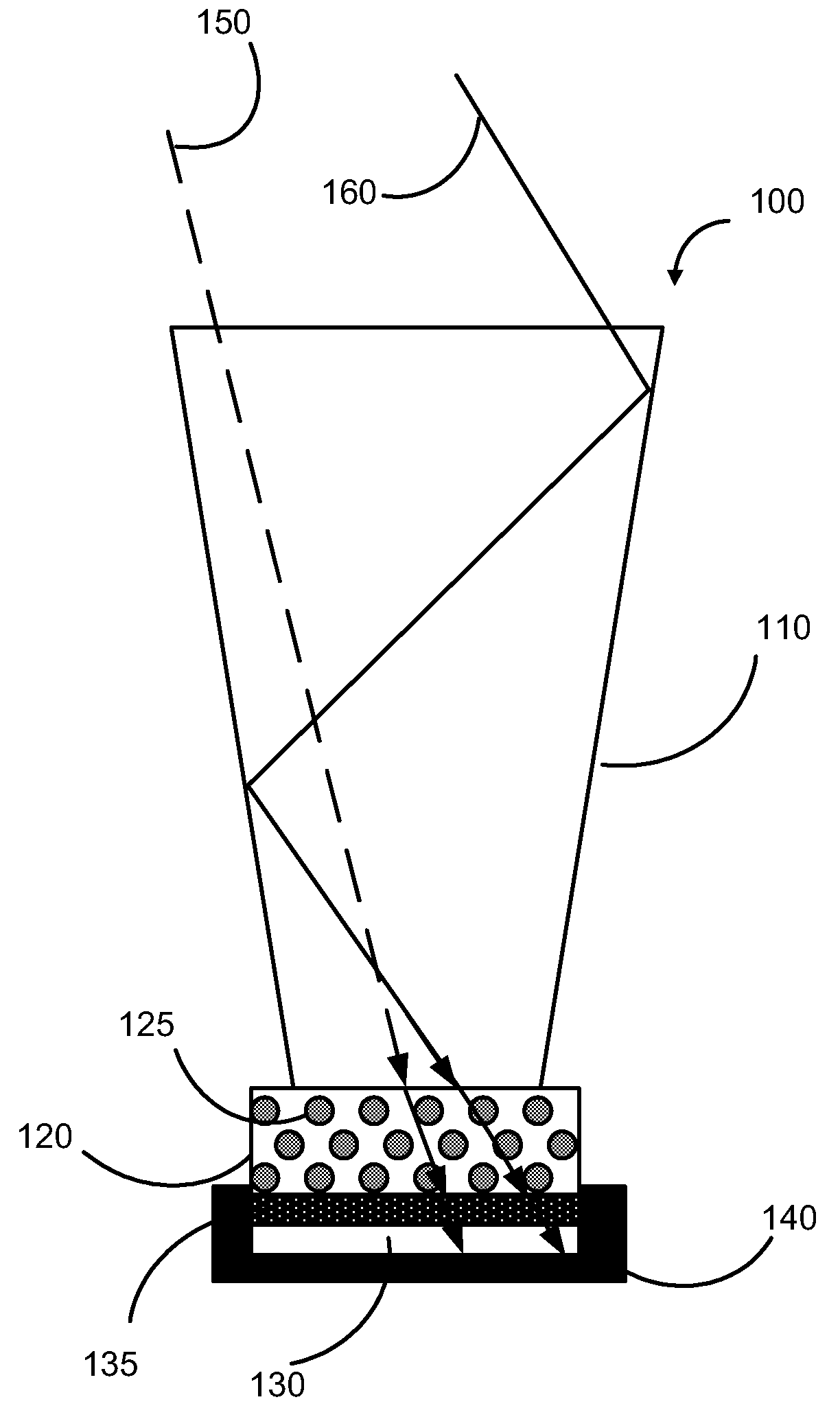Encapsulant with Modified Refractive Index
a technology of refractive index and encapsulant, which is applied in the direction of liquid surface applicators, coatings, semiconductor devices, etc., can solve the problems of undesirable optical losses, restrict the overall performance that can be achieved by a system, etc., and achieve the effect of increasing the acceptance angle of a cpv system, reducing the overall performance of the system, and reducing the overall performan
- Summary
- Abstract
- Description
- Claims
- Application Information
AI Technical Summary
Benefits of technology
Problems solved by technology
Method used
Image
Examples
Embodiment Construction
[0009]The present invention provides an optical system in which an encapsulant is modified to have a refractive index that approaches or substantially matches that of an optical component to which it is coupled. The present invention may be used in conjunction with a CPV system in order to increase the acceptance angle of light reaching the solar cell. Thus a CPV system of this invention may provide usable electrical energy from solar radiation collected at broader range of angles than a CPV system with a narrower range of acceptance angles. This may result in increased performance of the CPV system, as more light is converted into usable electrical energy. In one embodiment a filler material may be used to modify the index of refraction of the encapsulant.
[0010]FIG. 1 is a schematic diagram of an exemplary optical system 100 used in the art to provide electrical energy from solar radiation. In optical system 100, an encapsulant 120 serves as an interface between an optical element ...
PUM
 Login to View More
Login to View More Abstract
Description
Claims
Application Information
 Login to View More
Login to View More - R&D
- Intellectual Property
- Life Sciences
- Materials
- Tech Scout
- Unparalleled Data Quality
- Higher Quality Content
- 60% Fewer Hallucinations
Browse by: Latest US Patents, China's latest patents, Technical Efficacy Thesaurus, Application Domain, Technology Topic, Popular Technical Reports.
© 2025 PatSnap. All rights reserved.Legal|Privacy policy|Modern Slavery Act Transparency Statement|Sitemap|About US| Contact US: help@patsnap.com



